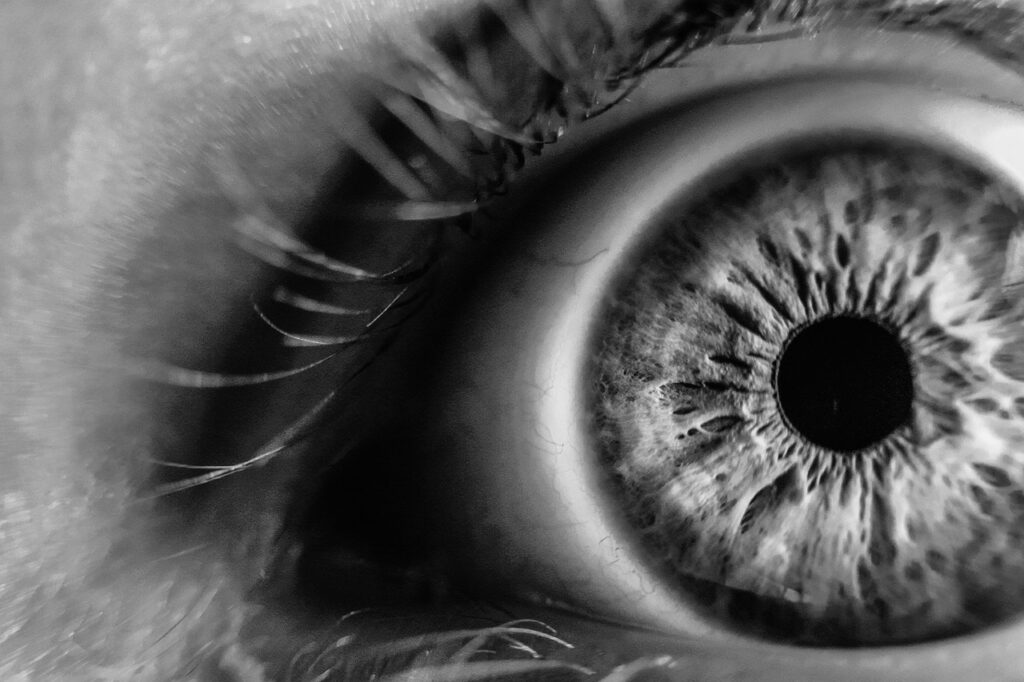- 0
- List Item
- 077 2202 8588
- info@leechtherapycentre.com

LT is an effective in the treatment of eye diseases such as glaucoma, cataract, inflammation of the vascular tract of the eye, keratitis, thrombosis of the retinal vessels, spasms of the eye, swellings and various inflammatory disorders. Further indications for the use of leeches are eye injuries and increased intraocular pressure. Leeches are also used by number of clinics before eye operations to relieve pressure and after operations on the cornea to avoid tissue rejection.
After placing leeches near the eye area the spasm of the eye muscles is removed, the blood flow speed increases and becomes less viscous, the eye tissues receive more nutrients and oxygen. As a result, eye vision sharpness, clarity, contrast increase, colour and light perception improves, which can be confirmed with medical checks.For the first time, the leech was used in the treatment of ophthalmic diseases by the founder of military field surgery, Corresponding Member of the Academy of Sciences, participant in three wars N. I. Pirogov. He was the first doctor to perform eye surgery on the battlefield and used leeches to prevent postoperative complications. It was discovered that leeches could help preserve the sight of those who received contusion as well as a gunshot wound to the eyes. In most cases soldiers who did not receive leech treatment had their vision deteriorate severely up to the complete sight loss, while those who used leeches had partially or more often fully recovered.
Today, it has been proven that leech therapy is an effective method to treat the retinal detachment both in the preoperative and postoperative periods. The retinal detachment means the death of retinal vessels, which might lead to blindness. This is where leeches can help. From the composition of leech saliva, it is clear that leech therapy can be highly useful where vascular lesions and oedema occur.
After working with a laser the intraocular pressure typically increase. The leech therapy can help here to quickly return it to normal. In general, any surgical intervention, as a rule, is accompanied by a spasm of the eye muscles and blood vessels, which in turn causes various complications. The leech relieves spasm in the very first minutes of its work, therefore allowing for quick rehabilitation.
The medical leech can help restore blood circulation in the eyeball and eye blood vessels, assists removal of toxins and enhance the delivery of oxygen and nutrients leading to eyes receiving a better nourishment. Also, thanks to the removal of spasm and intraocular pressure, the blood flow will increase, the congestion will gradually disappear. As the result, the patient’s vision will begin to improve.
Cataract is a clouding of the internal tissues of the lens or its capsule. The Greek word “cataract” means “waterfall”. A person with a cataract looks at the world as if through a stream of water. After 1-2 courses of Leech therapy it is possible to achieve the reverse development of the process of clouding of the lens, which improves vision without resorting to surgical intervention. One of the most common eye problems is thrombosis of the retinal vessels – impaired blood circulation in the human eye, blockage of the veins, which can lead to complete blindness if no action is taken. This disease occurs in people who lead a sedentary lifestyle. Leech saliva contains substances beneficial for the eyes. Hirudin has antithrombotic and thrombolytic action – it effectively thins the blood, reducing its viscosity. The destabilase dissolves blood clots and thrombus and hyaluronidase promotes growth of new capillaries. Other substances remove inflammation, disinfect and, most importantly, relieve spasm of the eye vessel. Even after surgical interventions, its the spasm that often leads to postoperative complications. Hirudotherapy is used after laser intervention: when intraocular pressure rises, leeches, along with spasm, remarkably relieve eye pressure.
Glaucoma is a group of eye diseases characterized by a constant or periodic increase in intraocular pressure, followed by the development of typical visual field defects, decreased visual acuity, and optic nerve atrophy. While leeches are unlikely to completely cure glaucoma, they can provide significant relief for such patients . For example, severe pain radiating to the temple and the eye, vomiting, nausea almost completely disappear within 30–40 min of leech application, Also visibility improves from “foggy” to more clear. Hirudotherapy provides support in all forms, types and stages of glaucoma. With swelling of the cornea, eye burns, leeches will also help. They can help with inflammation and relieve spasm. With iridocyclitis (inflammatory diseases of the anterior choroid), there is a decrease in soreness of the eye and swelling of the iris. The leech provides anti-bacterial cleansing effect and anti-inflammatory enzymes. With uveitis (inflammation of the choroid (uveal tract) the leeches can help stop inflammation and prevent the formation of coarse strands, which over time could cause retinal detachment.

© 2025 Leech Therapy Centre UK | All Rights Reserved